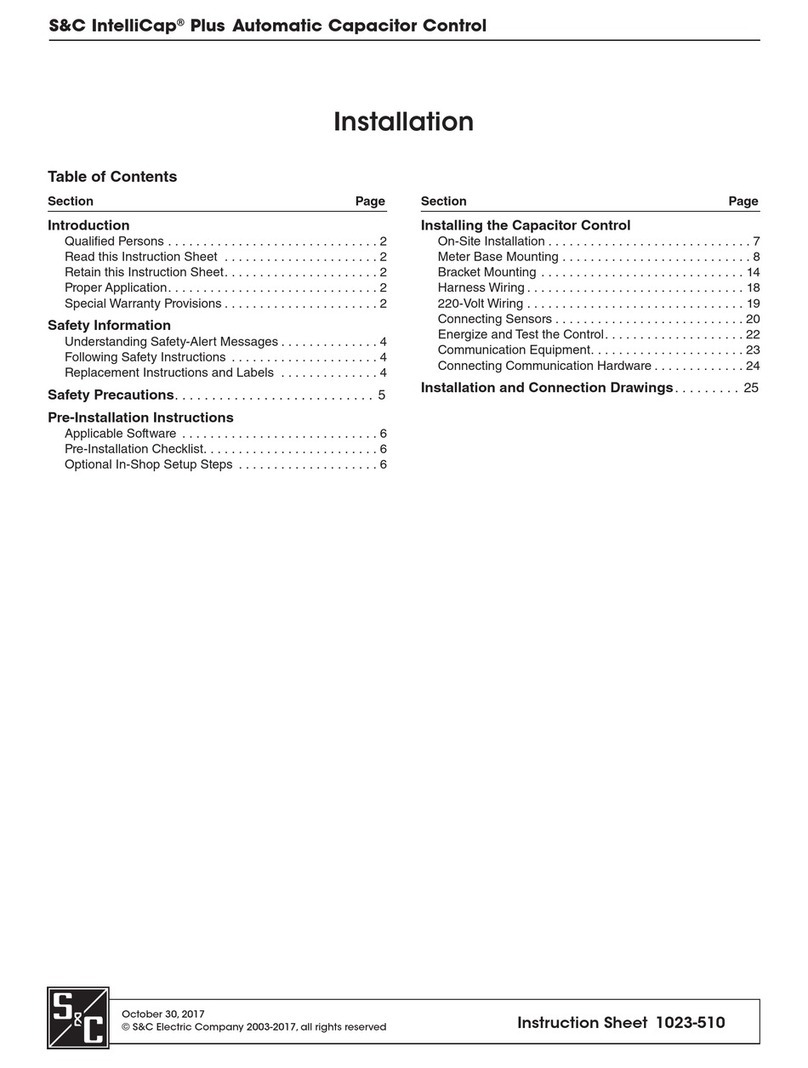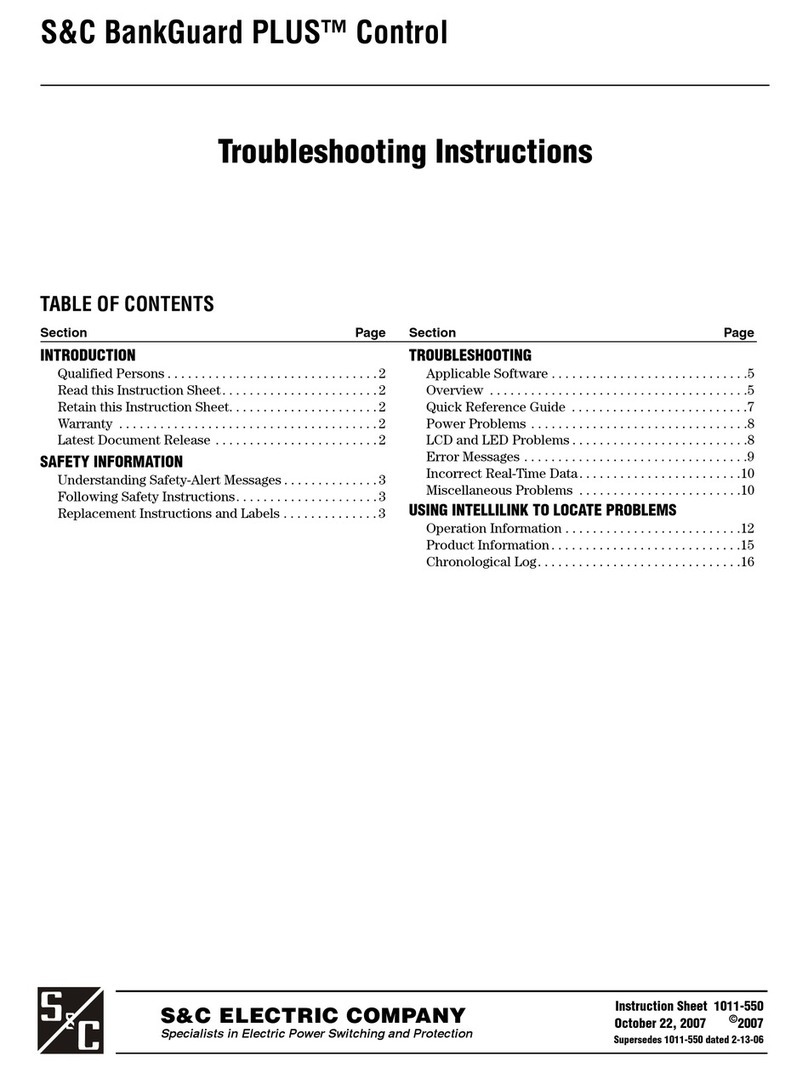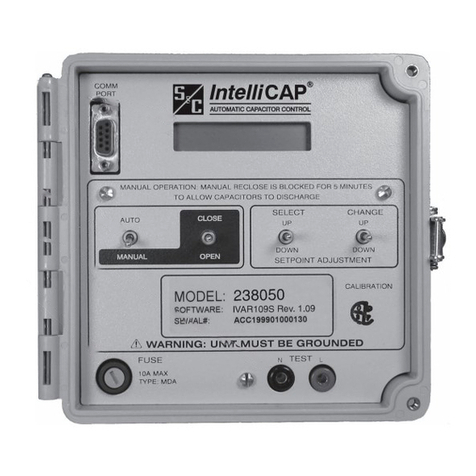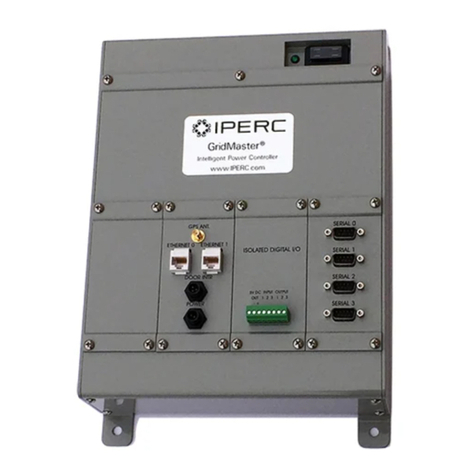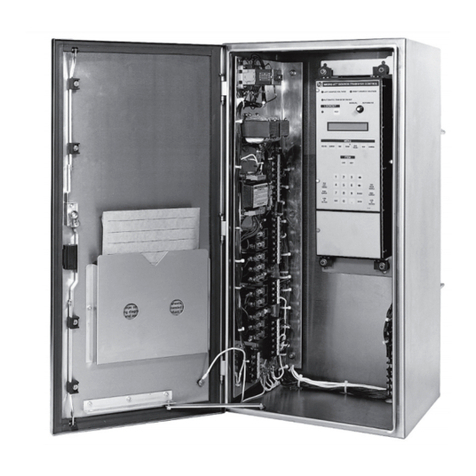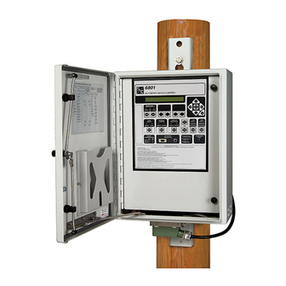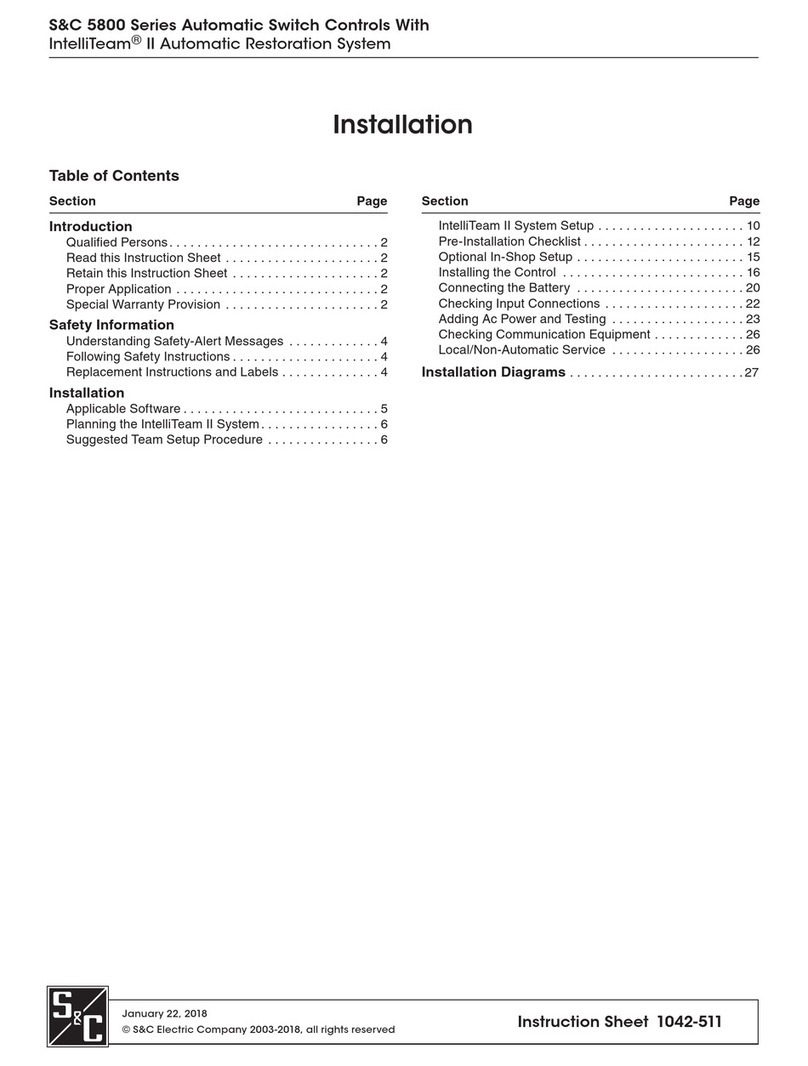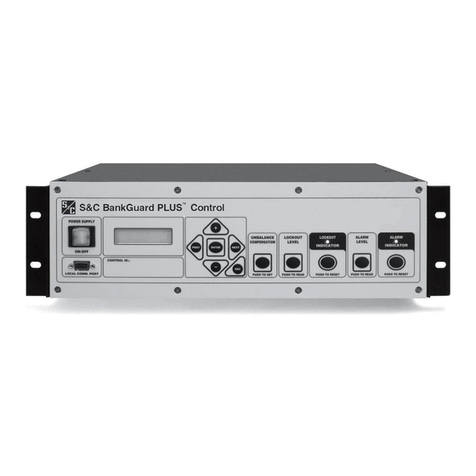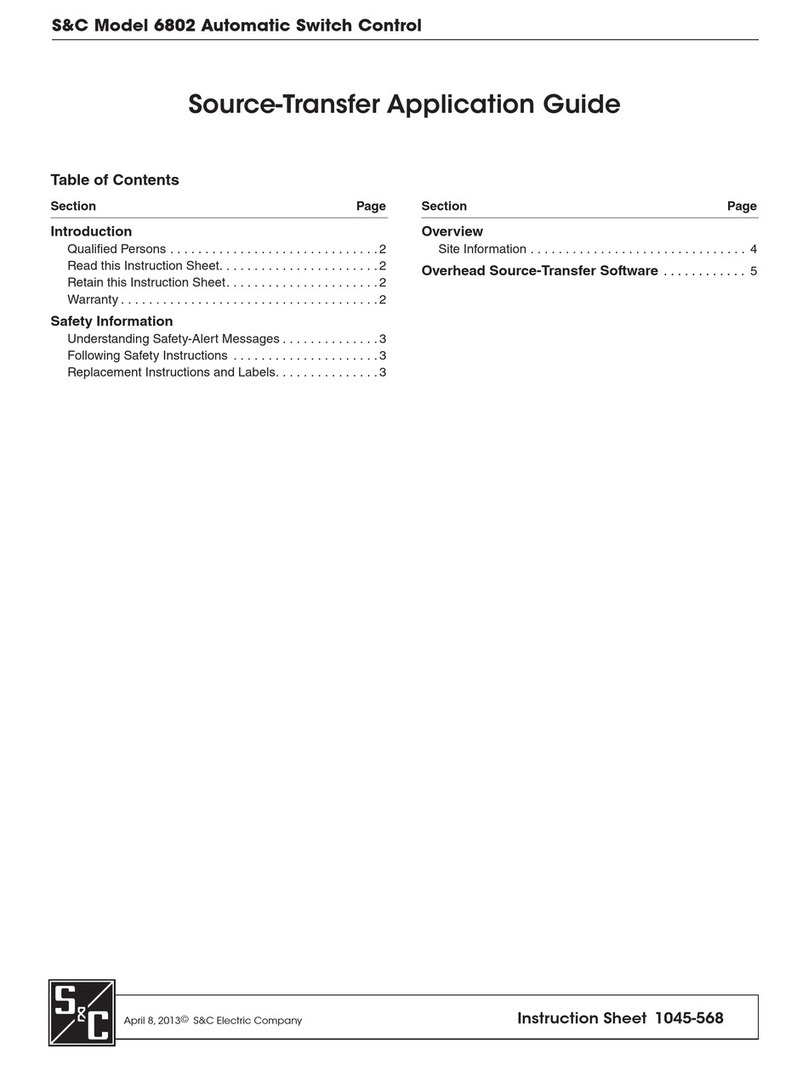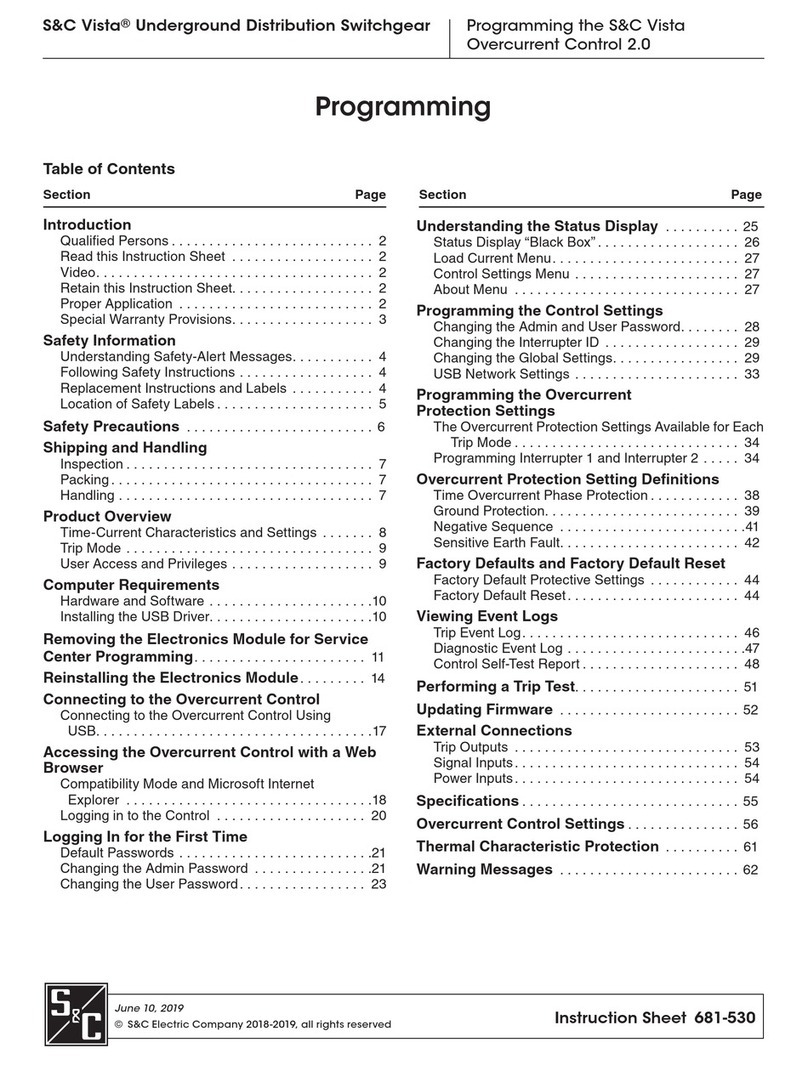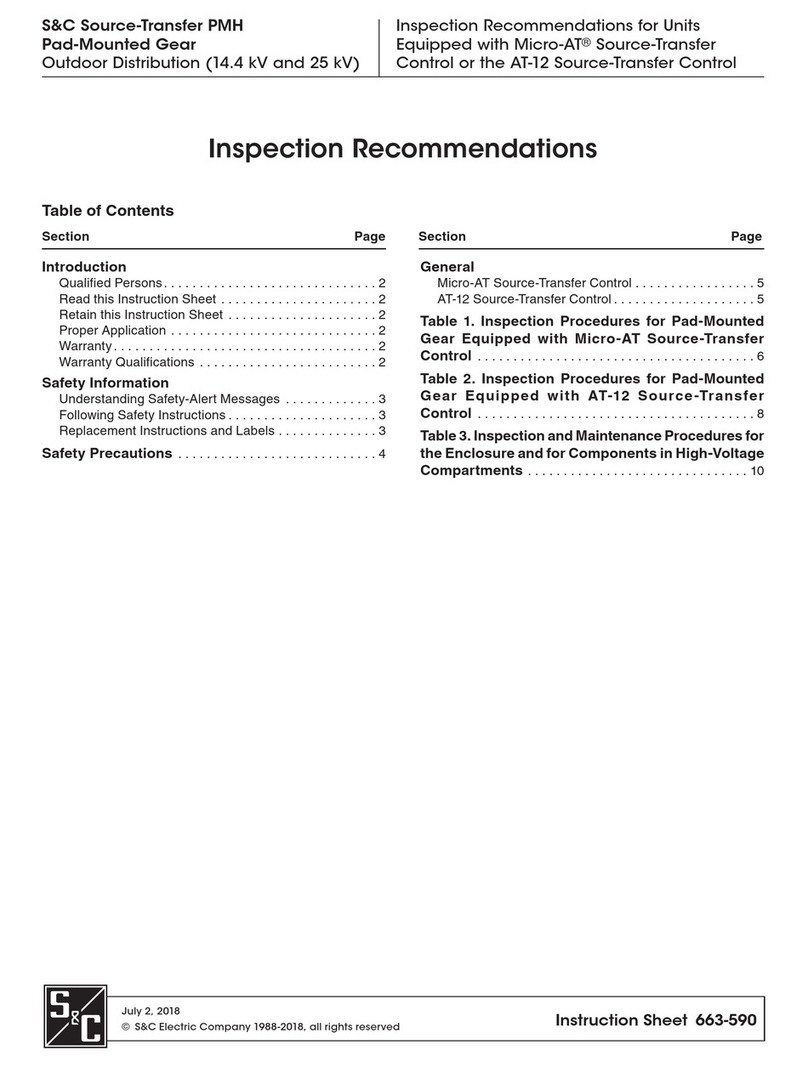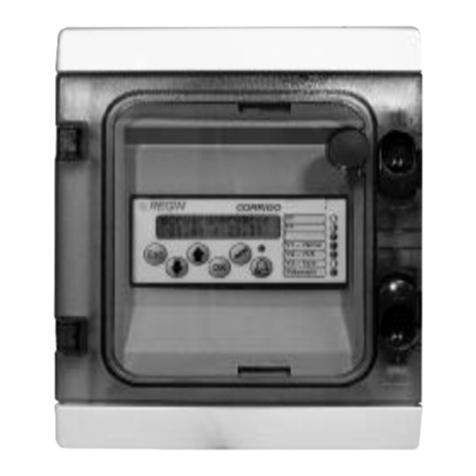
S&C ELECTRIC COMPANY
Specialists in Electric Power Switching and Protection
Instruction Sheet 1011-530
October 22, 2007 ©2007
Supersedes 1011-530 dated 2-13-06
TABLE OF CONTENTS
Section Page Section Page
INTRODUCTION
Qualified Persons . . . . . . . . . . . . . . . . . . . . . . . . . . . . . . . 2
Read this Instruction Sheet. . . . . . . . . . . . . . . . . . . . . . . 2
Retain this Instruction Sheet. . . . . . . . . . . . . . . . . . . . . . 2
Warranty . . . . . . . . . . . . . . . . . . . . . . . . . . . . . . . . . . . . . . 2
Latest Document Release . . . . . . . . . . . . . . . . . . . . . . . . 2
SAFETY INFORMATION
Understanding Safety-Alert Messages . . . . . . . . . . . . . . 3
Following Safety Instructions. . . . . . . . . . . . . . . . . . . . . 3
Replacement Instructions and Labels . . . . . . . . . . . . . . 3
UNGROUNDED WYE BANKS
Applicable Software . . . . . . . . . . . . . . . . . . . . . . . . . . . . . 5
Ungrounded Wye Banks . . . . . . . . . . . . . . . . . . . . . . . . . 5
Graphical Method . . . . . . . . . . . . . . . . . . . . . . . . . . . . . . . 5
Formula Method . . . . . . . . . . . . . . . . . . . . . . . . . . . . . . . . 9
Gross Overvoltage . . . . . . . . . . . . . . . . . . . . . . . . . . . . . 11
Unbalance Compensation . . . . . . . . . . . . . . . . . . . . . . . 12
GROUNDED WYE BANKS . . . . . . . . . . . . . . . . . . . . . . . . . . 15
Graphical Method . . . . . . . . . . . . . . . . . . . . . . . . . . . . . . 16
Formula Method . . . . . . . . . . . . . . . . . . . . . . . . . . . . . . . 19
Gross Overvoltage . . . . . . . . . . . . . . . . . . . . . . . . . . . . . 21
Alarm Level . . . . . . . . . . . . . . . . . . . . . . . . . . . . . . . . . . . 22
UNGROUNDED WYE SHUNT REACTORS
Formula Method . . . . . . . . . . . . . . . . . . . . . . . . . . . . . . . 23
Gross Overvoltage . . . . . . . . . . . . . . . . . . . . . . . . . . . . . 23
Unbalance Compensation . . . . . . . . . . . . . . . . . . . . . . . 24
USING THE LCD FOR SETUP. . . . . . . . . . . . . . . . . . . . .25
Display Mode Shortcut Buttons . . . . . . . . . . . . . . . . . .26
LCD Setup Mode . . . . . . . . . . . . . . . . . . . . . . . . . . . . . . .27
Hardware and Software Requirements . . . . . . . . . . . .29
Install IntelliLINK Software . . . . . . . . . . . . . . . . . . . . . .29
Start IntelliLINK Software . . . . . . . . . . . . . . . . . . . . . . .29
IntelliLINK Screens. . . . . . . . . . . . . . . . . . . . . . . . . . . . .31
IntelliLINK Menu Tree . . . . . . . . . . . . . . . . . . . . . . . . . .32
IntelliLINK Setup. . . . . . . . . . . . . . . . . . . . . . . . . . . . . . .32
Enter Setup Information . . . . . . . . . . . . . . . . . . . . . . . .33
Unbalance Compensation Feature . . . . . . . . . . . . . . . .40
Calculated Lockout Level. . . . . . . . . . . . . . . . . . . . . . . .47
Calculated Alarm Level . . . . . . . . . . . . . . . . . . . . . . . . .48
Normal Operation . . . . . . . . . . . . . . . . . . . . . . . . . . . . . .49
S&C BankGuard PLUS™ Control
Setup Instructions
